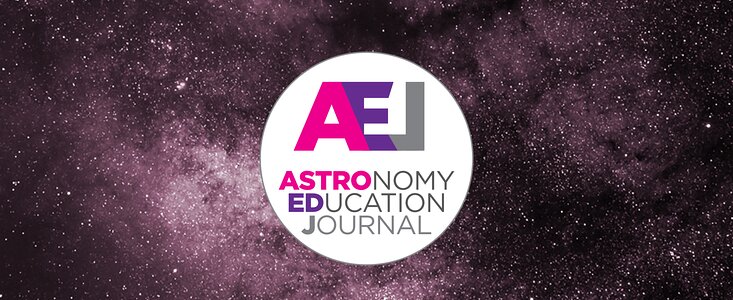- News
- Science
- Scientific Bodies
- Divisions
- Commissions
- Commission A1 Structure
- Commission A2 Structure
- Commission A3 Structure
- Commission A4 Structure
- Commission B1 Structure
- Commission B2 Structure
- Commission B3 Structure
- Commission B4 Structure
- Commission B5 Structure
- Commission B6 Structure
- Commission B7 Structure
- Commission C1 Structure
- Commission C2 Structure
- Commission C3 Structure
- Commission C4 Structure
- Commission C5 Structure
- Commission D1 Structure
- Commission E1 Structure
- Commission E2 Structure
- Commission E3 Structure
- Commission E4 Structure
- Commission F1 Structure
- Commission F2 Structure
- Commission F3 Structure
- Commission F4 Structure
- Commission G1 Structure
- Commission G2 Structure
- Commission G3 Structure
- Commission G4 Structure
- Commission G5 Structure
- Commission H1 Structure
- Commission H2 Structure
- Commission H3 Structure
- Commission H4 Structure
- Commission J1 Structure
- Commission J2 Structure
- Commission J3 Structure
- Commission X1 Structure
- Commission X2 Structure
- Past Commission Organising Committees
- Working Groups
- Centres
- Scientific Meetings
- Rules & Guidelines
- General Assemblies
- Meeting Proposals
- Future IAU Meetings
- General Assemblies
- EC Meetings
- Officers' Meetings
- Regional Meetings
- Symposia
- Focus Meetings
- Institutional Meetings
- IAU Offices Meetings
- IAU-Sponsored Meetings
- Letters of Intent submitted for 2024
- Letters of Intent submitted for 2023
- Letters of Intent submitted for 2022
- Letters of Intent submitted for 2021
- Letters of Intent submitted for 2020
- Past IAU Meetings
- Templates
- Other Meetings
- Grants & Prizes
- Scientific Bodies
- Publications
- IAU Publications
- IAU Strategic Plan
- Symposia
- WGSBN Bulletins
- Regional Meetings
- Information Bulletins/Catalyst
- E-Newsletters
- Focus Meetings
- Transactions A
- Transactions B
- Related Publications
- GA Newspapers
- CAPjournal
- IAU Books
- Brochures
- IAU Offices
- WG Reports
- Commission Reports
- Division Reports
- Past IAU Publications
- Rules, Guidelines and Instructions for Proceedings
- Publishers
- IAU Publications
- Administration
- About the IAU
- Statutes & Rules
- IAU Policies
- IAU Executive Bodies
- IAU Secretariat
- Resolutions
- Members Administration
- Administrative Dates & Deadlines
- International Organisations Relations
- Donate to the IAU
- Training in Astronomy
- Astronomy for Education
- Astronomy for Development
- Astronomy for the Public
- Office for Astronomy Outreach
- FAQ
- Themes
- Satellite Constellations
- Astronomy in Everyday Life
- How to Report a Discovery
- Careers in Astronomy
- Defining our Place in the Cosmos
- The Constellations
- Light Pollution
- Measuring the Universe
- Near Earth Objects
- How to Participate in Astronomy Research
- Naming of Astronomical Objects
- Naming of Exoplanets
- Buying Star Names
- Naming Stars
- Pluto and the Solar System
- IAU Member Statistics
- Our Moon: the Moon
- Meteors & Meteorites: The IAU Definitions of Meteor Terms
- UNESCO-IAU Portal to the Heritage of Astronomy
- Social Media
- Past Events
- Call for Online Resources
- Astronomy@Home Awards
- Contact
ann22003 — Announcement

20 January 2022
IAU Launches the Astronomy Education Journal
The IAU has just published the first issue of the Astronomy Education Journal (AEJ). This new online publication is produced by IAU Commission C1 Astronomy Education and Development. It aims to serve the astronomy education community by bringing together practical, newsworthy and scholarly publications involving developments in the field.
Inspired by the Communicating Astronomy with the Public Journal (CAPjournal), published by IAU Commission C2, AEJ contains both peer-reviewed and non-peer-reviewed but curated articles, separated into two sections: Astronomy Education Research (AER) and Astronomy Education and Practice.
The first section contains research articles on formal and technical astronomy education research, that are peer-reviewed in the same way as traditional scientific journal manuscripts. As such, they need to be of a sufficient scholarly standard, as recommended by, for example, Scopus.
The second section focuses on building collaboration and circulating information amongst the community, by including other relevant material, such as news, announcements, interviews, opinions, resources, correspondence, best practise and classroom and astronomical activities. In addition, there is also scope for AEJ to publish invited reviews written by specialists in the area of AER.
The first issue of AEJ contains two peer-reviewed articles: one on the assessment of teachers’ science practises using astronomy storybooks, and one on interactive cosmology visualisation in the classroom. There are also five articles in the Astronomy Education and Practice section, with topics ranging from timing pulsars as an exercise in statistical analysis to the question of whether and how to teach general relativity in high school.
AEJ invites everyone in the community to submit papers for publication and to share this new journal with others who might be interested. Further information about the journal and instructions for authors can be found on the AEJ website.
More information
The IAU is the international astronomical organisation that brings together more than 12 000 active professional astronomers from more than 100 countries worldwide. Its mission is to promote and safeguard astronomy in all its aspects, including research, communication, education and development, through international cooperation. The IAU also serves as the internationally recognised authority for assigning designations to celestial bodies and the surface features on them. Founded in 1919, the IAU is the world's largest professional body for astronomers.
Links
- Astronomy Education Journal (AEJ) first issue
Contacts
Urban Eriksson
Co-editor Astronomy Education Journal
Lund University, Sweden
Mobile: +46 46 73 059 39 62
Email: urban.eriksson@fysik.lu.se
Paulo S. Bretones
Co-editor Astronomy Education Journal
Universidade Federal de São Carlos, Brazil
Email: bretones@ufscar.br
Lars Lindberg Christensen
IAU Director of Communications
Mobile: +1 520 461 0433/+49 173 38 72 621
Email: lars.christensen@noirlab.edu
